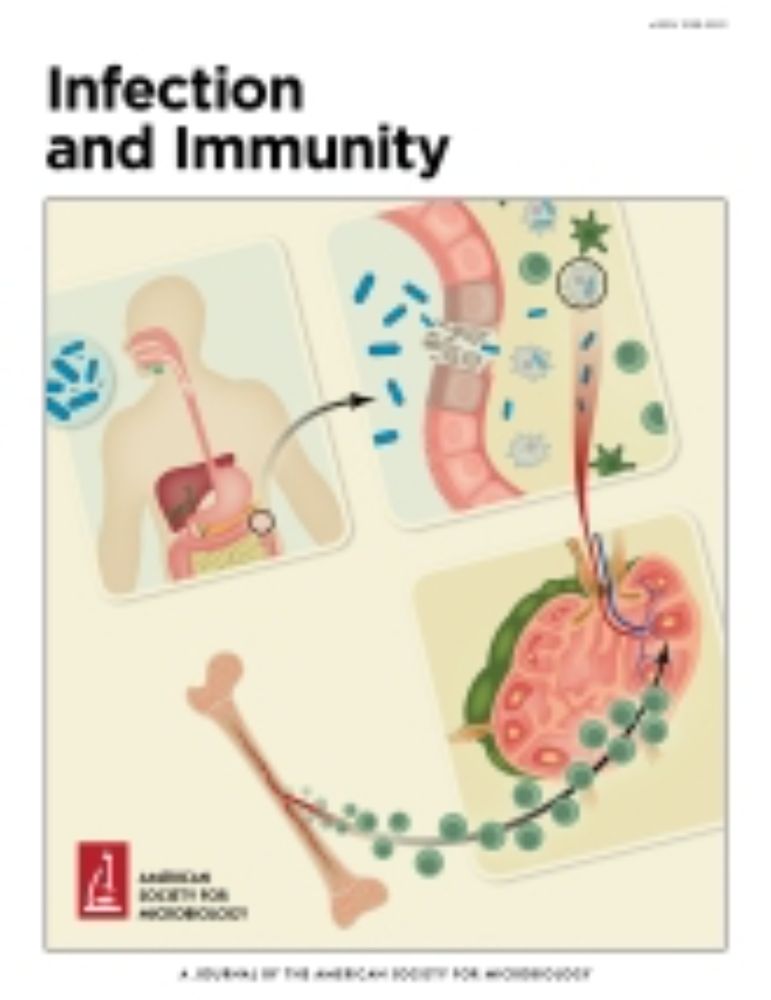Director of Department of Microbiome Science at MPI Biology Tübingen Germany. Also known as Leylab.com.
The 31st Annual MMPC, hosted by Loyola University Chicago on Oct 3-5, 2025. Co-chairs Jonathan Allen and @akroken.bsky.social. Website: https://www.mmpconference2025.com
Studying Klebsiella pneumoniae at WashU!
Laboratory interested in mycobacterial pathogenesis and lung inflammation
Signaling and Asymmetry of the Bacterial cell lab at MMSB - CNRS Lyon
We study function, communication and interaction of #microorganisms, with emphasis on microbial metabolism, synthesis & function of natural products, and cellular communication, regulation and organisation. Imprint: https://www.mpi-marburg.mpg.de/imprint
👩🔬 The Institut Pasteur is a leading global biomedical research institute.
🔬 Explore with us the frontiers of biomedical research
🧪 Follow us to uncover groundbreaking discoveries
🌍 Join a community passionate about progress and open science
How to specifically select a protein from one side of the membrane and to transport it on the other side ? That's what we love to understand. #T6SS #T9SS
Location: CNRS - Aix-Marseille Université, France
https://www.cascaleslab.fr
Postdoc in bacterial systems biology in the Heilbronner lab, LMU. Previously Peschel lab and Brochado lab.
Earth scientist 🌎
CNRS researcher / Chaire de Professeur Junior @ Mediterranean Institute of Oceanography, Marseille, France;
Geomicrobiology, Biogeoscience, Polar & extreme environments;
ERC StG #ERC_SIESTA;
My views; He/him; 🏳️🌈ally
www.jbradleylab.com
Assistant Prof. at Leiden University Medical Center
Host-Defence | Structural biology | Single-molecule Biophysics
http://www.loefflab.com
Understanding the pathogen phenotypic variations to decipher & control the infection process and the treatment failures
https://ciri.ens-lyon.fr/teams/persist
Principal Investigator | Microbial Molecular Genomics Lab | https://www.rousset-lab.com |International Center for Infectiology Research (CIRI) in Lyon 🇫🇷 Studying the molecular basis of phage-bacteria interactions.
Bacterial cell biology lab in the Kingdom of Belgium - Exploring predatory bacteria in space and time - F.R.S.-FNRS research associate / UCLouvain Associate Prof / WEL-RI investigator
Group leader.
HGT in bacterial pathogens. Acinetobacter, Legionella. Natural transformation. AMR. MGEs.
Centre International de Recherche en Infectiologie
Prof. @ University Würzburg, PI @ Helmholtz HIRI, Speaker Single Cell Center Wuerzburg
My science: RNA biology, Single cell genomics, Infectious diseases
My motto: Vivons Curieux!
Official account of the Klebsiella Virtual Seminar Series #klebclub
Where the future begins. 🚀🔬 One of the world’s leading universities for technology & natural sciences. Posts in both English and German.
www.ethz.ch
EMBO is the organization of more than 2,100 leading researchers that promotes excellence in life sciences in Europe and beyond.
https://www.embo.org/

